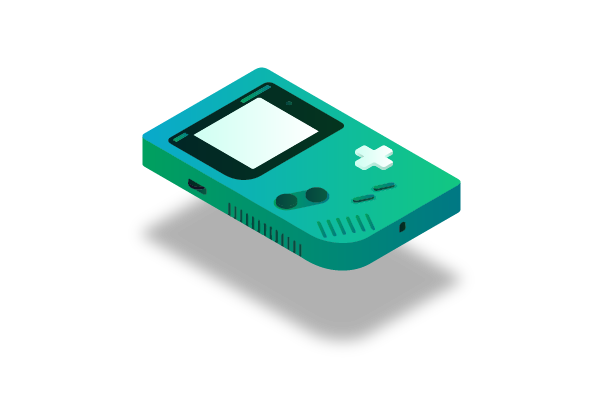In today’s rapidly evolving world of blockchain technology, Non-Fungible Tokens (NFTs) have truly stolen the spotlight. These one-of-a-kind digital assets have not only changed the way we think about digital ownership but have also given rise to an exciting new phenomenon: NFT dApps, or Decentralized Applications. This article dives into the captivating realm of NFT dApps, offering insights into why they matter, how they’re influencing the digital landscape, and the immense potential they bring to the table.
NFT dApps, short for Non-Fungible Token decentralized applications, are playing a pivotal role in reshaping the way we interact with digital content and assets. These applications leverage blockchain technology to enable users to buy, sell, and trade unique digital items, from art and collectibles to virtual real estate and in-game assets. This innovation has not only unlocked new avenues for creators and collectors but has also democratized access to the digital economy, making it more inclusive and transparent.
The impact of NFT dApps is far-reaching, as they empower content creators to monetize their digital creations directly and provide users with true ownership of their digital assets. With NFT dApps, we are witnessing a transformative shift in how we engage with the digital world, and the potential for these applications to reshape various industries, from art and gaming to music and fashion, is truly exciting. As NFT dApps continue to evolve and mature, their influence on our digital lives is only expected to grow, bringing with them new opportunities and possibilities that we are just beginning to explore.
Understanding NFTs and Their Rise

NFTs, short for Non-Fungible Tokens, are digital assets that serve as proof of ownership and authenticity for one-of-a-kind items or pieces of content on the blockchain. Unlike traditional cryptocurrencies such as Bitcoin or Ethereum, NFTs can’t be divided or exchanged on a like-for-like basis due to their unique nature. They’ve witnessed a remarkable surge in popularity, particularly in the realms of art, gaming, and entertainment. This surge has led to a growing community of collectors and enthusiasts eagerly seeking to acquire these rare digital assets.
One interesting development in the NFT space is the emergence of NFT dapps, or decentralized applications specifically designed for managing, creating, and trading NFTs. These applications have added a new layer of functionality to the NFT ecosystem, making it easier for users to explore, buy, sell, and interact with these unique digital items. As NFT dapps continue to evolve, they are likely to play a pivotal role in shaping the future of NFT markets and their accessibility.
Also Read: What Is RPC Node? The Building Blocks of Blockchain Connectivity
NFTs have found particular traction in the art world, where artists can tokenize their creations and sell them as NFTs, providing a new way for creators to monetize their work. Likewise, the gaming industry has embraced NFTs as a means of allowing players to own and trade in-game assets, fostering a sense of ownership and value within virtual worlds. In the entertainment industry, musicians, filmmakers, and content creators are also exploring NFTs to engage with fans and generate revenue in innovative ways.
In essence, NFTs represent a fascinating intersection of technology, art, and commerce, with NFT dapps acting as facilitators in this digital revolution. As the NFT space continues to evolve and expand, it’s clear that these unique tokens are here to stay, transforming how we perceive and interact with digital ownership and authenticity.
What are NFT dApps?

NFT dApps, or Non-Fungible Token decentralized applications, are the next step in the world of NFTs, which are unique digital assets. These dApps use blockchain technology to create a secure and decentralized environment where users can make, exchange, and interact with NFTs. Unlike traditional platforms, NFT dApps don’t rely on a central authority, giving users more control over their digital assets and transactions. This decentralization not only boosts security but also reduces the need for middlemen, making the whole process more transparent and cost-effective.
In NFT dApps, users have the freedom to create, buy, sell, or trade NFTs directly with each other, without the involvement of intermediaries like marketplaces or auction houses. This peer-to-peer aspect is a significant advantage, as it promotes a more democratic and user-driven ecosystem. Additionally, the transparency of blockchain technology ensures that the ownership and history of each NFT are easily verifiable, reducing the risk of fraud.
NFT dApps come in various forms, from art marketplaces to virtual worlds where users can showcase and trade their digital collectibles. These applications offer a wide range of opportunities for artists, collectors, and enthusiasts to participate in the NFT ecosystem. As the NFT space continues to evolve, NFT dApps are likely to play a central role in shaping its future.
NFT dApps in the Digital Art Realm
NFT dApps, or Non-Fungible Token decentralized applications, have become a revolutionary force in the digital art realm. These applications are at the intersection of blockchain technology, digital art creation, and the ever-evolving art market. NFTs, which are unique digital assets that represent ownership of a specific piece of digital art or any other digital item, have transformed the way artists create, distribute, and monetize their work.
One of the most prominent features of NFT dApps is their ability to provide provenance and authenticity to digital artworks. Through blockchain technology, artists can create a digital certificate of authenticity for their pieces, ensuring that their work cannot be easily duplicated or counterfeited. This newfound trust in the digital art market has attracted both established and emerging artists, as well as collectors, investors, and enthusiasts.
Furthermore, NFT dApps have opened up new avenues for artists to monetize their creations. Traditional art market structures often involve intermediaries such as galleries, agents, and auction houses, who take a significant portion of an artist’s earnings. NFTs and decentralized platforms enable artists to sell their work directly to collectors, receiving a more substantial portion of the sale price and gaining greater control over their careers.
Many NFT dApps offer innovative features beyond simple ownership and transfer of digital assets. Some platforms allow artists to embed royalties into their NFTs, ensuring that they receive a percentage of the resale value each time the artwork changes hands. This feature has the potential to create a sustainable income stream for artists as their work gains value over time.
Additionally, NFT dApps often facilitate interactive and immersive experiences for collectors and fans. Some platforms enable artists to create unlockable content, limited editions, or even dynamic artworks that respond to user interactions. This interactivity adds a layer of engagement and excitement to the digital art world, attracting a broader audience.
However, it’s important to note that the NFT art space has faced criticism and challenges, particularly related to environmental concerns due to the energy-intensive nature of some blockchain networks. Additionally, issues with copyright infringement, plagiarism, and scams have arisen within the NFT ecosystem, emphasizing the need for better regulation and governance.
NFT dApps in Gaming

NFT dApps (Non-Fungible Token decentralized applications) in gaming represent a significant intersection between blockchain technology, digital assets, and the gaming industry. These applications leverage NFTs, which are unique digital tokens that represent ownership of a specific item or asset, to introduce novel and exciting features to the gaming world. Here’s a more detailed context:
NFTs in Gaming
NFTs have gained immense popularity in recent years for their ability to represent ownership of in-game items, characters, skins, and more. Unlike traditional in-game assets, NFTs are decentralized and can be traded, sold, or used across multiple games and platforms. This has opened up new possibilities for gamers and game developers alike.
Ownership and Scarcity
NFTs in gaming provide players with true ownership of their in-game assets. This means that players can buy, sell, or trade their NFT-based items outside of the game’s ecosystem, fostering a sense of rarity and exclusivity. Gamers can now truly own their digital collectibles.
Interoperability
NFTs can be used across multiple games and platforms that support the same blockchain standard. For example, an NFT sword acquired in one game could potentially be used in another game that integrates with the same blockchain, enhancing the gaming experience and expanding the utility of these digital assets.
Player-Driven Economies
NFTs have given rise to player-driven economies within games. Gamers can earn NFTs through gameplay, participate in virtual item markets, and even monetize their gaming skills and assets. This has created new opportunities for professional gamers, content creators, and traders.
Developers and Content Creation
Game developers are also benefiting from NFTs by creating and selling unique in-game items as NFTs, which can provide a new revenue stream. Additionally, user-generated content and mods can also be tokenized as NFTs, allowing creators to profit from their contributions.
Challenges and Concerns
While NFT dApps in gaming offer exciting opportunities, there are also challenges and concerns. These include issues related to copyright infringement, environmental concerns due to blockchain energy consumption, and market volatility.
Integration with Blockchain
NFT dApps in gaming are typically built on blockchain platforms like Ethereum, Binance Smart Chain, and others. Developers need to consider the choice of blockchain, smart contract development, and integration with wallets and marketplaces.
Gaming Communities
Successful implementation of NFTs in gaming often relies on building and maintaining strong gaming communities. Engaging players and fostering a sense of ownership and participation are crucial for the success of NFT-based gaming ecosystems.
NFT dApps in gaming represent a transformative development in the gaming industry, offering new ways for players to interact with in-game assets and creating opportunities for developers and content creators. However, they also bring challenges and require thoughtful consideration of blockchain technology and community engagement.
The Broader Implications of NFT dApps
Non-fungible tokens (NFTs) have gained significant attention in recent years, thanks to their ability to represent ownership and uniqueness in the digital world. NFT decentralized applications (dApps) have played a pivotal role in this phenomenon, offering a wide range of use cases beyond just the art and collectibles market. To understand the broader implications of NFT dApps, we must delve into the multifaceted aspects of this technology and its impact on various industries.
Digital Ownership and Provenance
NFT dApps provide a robust solution for proving ownership and provenance of digital assets. This extends far beyond the art world and can be applied to real estate, music, literature, and even virtual items within video games. This newfound ability to track the history and authenticity of digital assets can revolutionize how intellectual property rights are managed and enforced.
Decentralized Finance (DeFi) Integration
NFTs can be collateralized and used in DeFi applications, allowing individuals to unlock liquidity from their digital assets without needing to sell them. This intersection of NFTs and DeFi has the potential to reshape lending, borrowing, and yield farming strategies, opening up new financial opportunities for users.
Gaming and Virtual Worlds
The gaming industry has embraced NFTs and dApps to empower players with true ownership of in-game assets. Players can buy, sell, and trade digital items across different games, fostering interoperability and economic opportunities within virtual worlds. This trend has the potential to blur the lines between virtual and physical economies.
Also Read: Gas Limit: Controlling Execution Costs
Supply Chain and Authentication
NFTs can be used to verify the authenticity of physical goods by linking them to a unique digital certificate of ownership. This has implications for supply chain management, as consumers can trace the origin and history of products, ensuring transparency and authenticity in industries like luxury goods and agriculture.
Cultural Preservation
NFT dApps have also been instrumental in preserving cultural heritage, including historical documents, artifacts, and indigenous art. By digitizing and tokenizing these cultural assets, they can be securely stored and shared while protecting their integrity and heritage.
Intellectual Property and Licensing
The NFT space has given creators more control over their intellectual property, enabling them to receive royalties on secondary sales automatically through smart contracts. This has implications for the entertainment industry, where artists, musicians, and writers can benefit from ongoing revenue streams.
Environmental Concerns
The broader adoption of NFT dApps has raised concerns about their environmental impact, given the energy-intensive nature of blockchain technology. This has prompted discussions around sustainability and the need to develop eco-friendly blockchain solutions to mitigate these concerns.
Legal and Regulatory Challenges
As NFT dApps continue to grow in popularity, legal and regulatory frameworks are evolving to address issues related to ownership, taxation, and consumer protection. Governments and regulatory bodies are grappling with how to oversee this emerging technology.
NFT dApps are not just a trend but a technological innovation with profound implications for various industries. They have the potential to redefine ownership, empower creators, and revolutionize how we interact with digital and physical assets. However, realizing these benefits will require addressing challenges related to environmental sustainability, legal frameworks, and scalability as the NFT ecosystem continues to evolve.
Conclusion
In conclusion, NFT dApps are a powerful force reshaping the digital landscape. Their ability to provide secure, decentralized, and transparent platforms for the creation and exchange of NFTs has the potential to transform industries far beyond the realms of art and gaming. As we continue to explore the possibilities of this technology, it’s essential to remain mindful of its impact and the ethical considerations that come with it. NFT dApps are not just changing how we own and interact with digital assets; they are paving the way for a more decentralized and democratized digital future.
In this ever-evolving digital world, NFT dApps are poised to play a crucial role in shaping the way we create, trade, and interact with digital assets. Their impact is already being felt across various industries, from art and gaming to supply chains and beyond. As we navigate this exciting frontier, one thing is clear – NFT dApps are here to stay, and their transformative potential is boundless. Embrace the future, and stay tuned as we witness the continued evolution of the NFT dApp ecosystem.
Disclaimer: The information provided by HeLa Labs in this article is intended for general informational purposes and does not reflect the company’s opinion. It is not intended as investment advice or recommendations. Readers are strongly advised to conduct their own thorough research and consult with a qualified financial advisor before making any financial decisions.

Joshua Soriano
I am a writer specializing in decentralized systems, digital assets, and Web3 innovation. I develop research-driven explainers, case studies, and thought leadership that connect blockchain infrastructure, smart contract design, and tokenization models to real-world outcomes.
My work focuses on translating complex technical concepts into clear, actionable narratives for builders, businesses, and investors, highlighting transparency, security, and operational efficiency. Each piece blends primary-source research, protocol documentation, and practitioner insights to surface what matters for adoption and risk reduction, helping teams make informed decisions with precise, accessible content.
- Joshua Soriano#molongui-disabled-link
- Joshua Soriano#molongui-disabled-link
- Joshua Soriano#molongui-disabled-link
- Joshua Soriano#molongui-disabled-link

